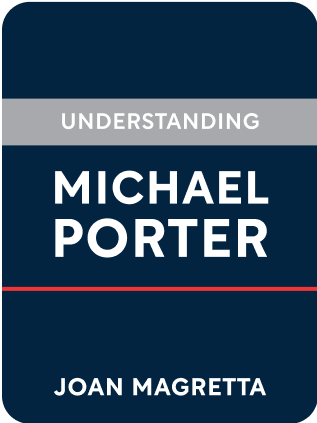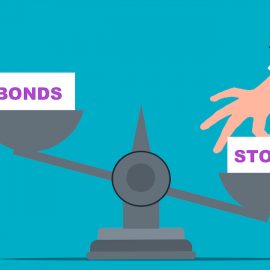

This article is an excerpt from the Shortform summary of "Understanding Michael Porter" by Joan Magretta. Shortform has the world's best summaries of books you should be reading.
Like this article? Sign up for a free trial here .
What is ROIC in finance? What does it mean, and how do you use eit?
ROIC in finance refers to the return on invested capital. Michael Porter argues that ROIC in finance is the most important metric for measuring a business success, and outlines how the Five Forces can help you analyze businesses.
What is ROIC? Why Does it Work?
The Five Forces analysis suggests the profitability of an industry, but it does not automatically suggest how you should operate in the industry to maximize profits.
First, we’ll unpack why some companies are more profitable than average. Then we’ll see how a unique value chain is the mechanism by which superior profits are achieved. One of the ways to use the Five Forces is the ROIC finance formula.
ROIC and Competitive Advantage
If you have a real competitive advantage, compared with rivals, you operate at a lower cost, command a premium price, or both.
The goal of every organization is to produce goods or services whose value exceeds the sum of the costs of all inputs. Thus, Porter proposes the best metric is Return on Invested Capital (ROIC). ROIC in finance tells you how well a company is using all its resources.
But what is the ROIC meaning? If you have a real competitive advantage, your ROIC finance formula will be sustainably higher than the industry average.
Instead of ROIC, many companies focus on inferior metrics:
- Return on sales: ignores the capital invested in the business
- Growth or market share: the game is not to be the biggest in the industry. Too many companies pursue unprofitable growth that never leads to good ROIC.
- “Market share says we just want to be big; we don’t care if we make money doing it.” – Herb Kelleher
- If you think growing large will be a winning strategy, remember that returns to scale may be illusory and cap out sooner than you think.
- Stock price: these reflect value only in the long run. In the short-term, focusing on stock prices causes earnings management and encourages mimicking other companies.
ROIC meaning is more than just its definition. Because Profits = Prices – Costs, you can achieve superior profits through increasing your relative price, or decreasing your relative cost, or both. As we’ll discuss later, these advantages should be achieved through a unique mix of activities that are difficult to replicate.
Quantify your org’s long-term profitability against the overall economy, then against the average return in your industry. Keep digging to understand why it’s performing better or worse than average – relative price and relative cost.
- If you have a 5% higher return, is that because your price is 8% higher and cost 3% higher, or price is 5% lower and costs 10% lower?
ROIC in Finance and Value
ROIC in finance can also help explain the idea of value, and how cost affects value. ROIC in finance is a complex concept, but things like relative price and cost are factors that can help you build a strategy.
Relative Price
ROIC meaning can also refer to price. Create more buyer value and you raise willingness to pay. The ability to command a higher price is differentiation, in Michael Porter’s terminology.
- With corporate buyers, decisions are often rational and relative value can be quantified (eg a superior machine offsetting labor costs).
- With consumers, buying decisions are more likely to have an emotional or intangible dimension. Rarely do they figure out what they are paying for convenience.
- The author notes that consumers pay $100/hour for grating cheese.
Examples
- People are more willing to pay for Apple products than Android products of similar specifications, because of Apple’s software ecosystem, habit, and emotion.
- Organic foods sell at higher prices than conventional foods because of health, taste, and environmental concerns.
Relative Cost
You can also produce at lower cost than your rivals. This might come from lower operating costs or using capital more efficiently.
- Sustainable cost advantages usually involve many parts of the company, not just one function. The culture of low cost permeates the entire company.
- Distinguish this from being “low-cost producers,” which implies that cost advantages come only from production.
Examples
- Unlike vertically integrated rivals like HP, Dell built custom computers using outsourced components. It carried little inventory and didn’t make its own components. As the prices of components rapidly fell, Dell’s balance sheet was kept healthier.
- Vanguard, IKEA, Southwest all have business models and cultures that reinforce low-cost value. Their network of low-cost activities go far beyond merely being low-cost producers.
ROIC in finance is a well-known and important metrics. Using ROIC in finance, you can create better business strategies.

———End of Preview———
Like what you just read? Read the rest of the world's best summary of Joan Magretta's "Understanding Michael Porter" at Shortform .
Here's what you'll find in our full Understanding Michael Porter summary :
- How Porter's famous Five Forces help you analyze every industry
- How IKEA, Southwest Airlines, and Zara have ironclad, defensible strategies
- Why the best companies reject opportunities to focus on what they know






